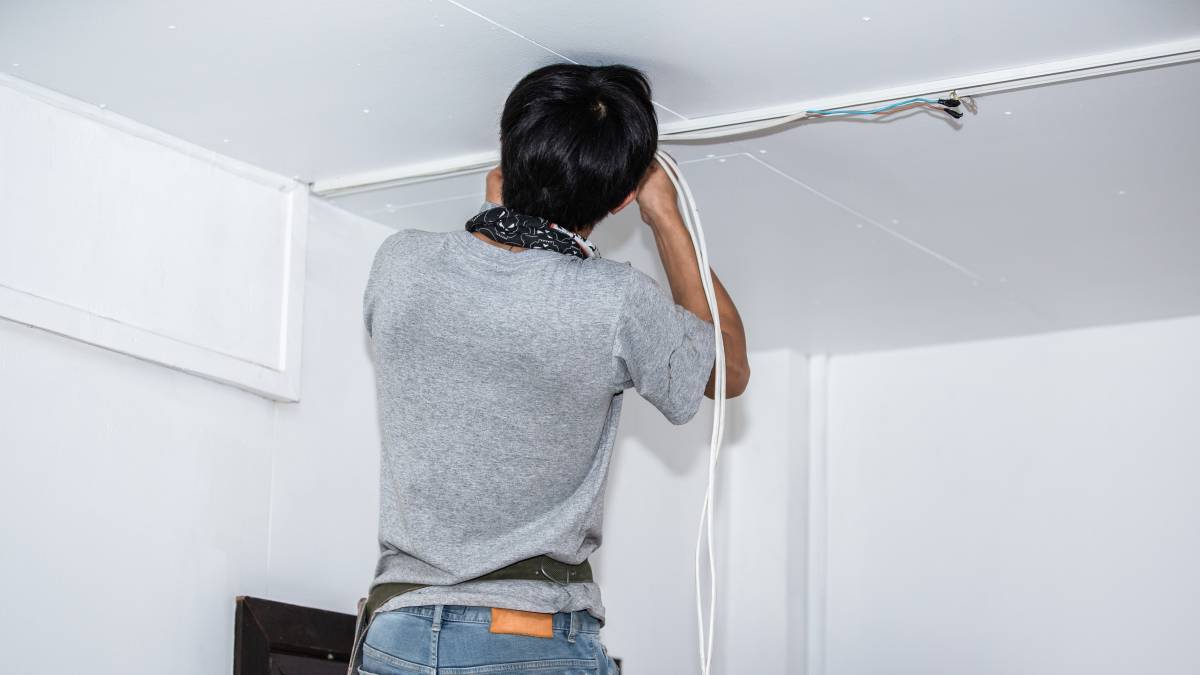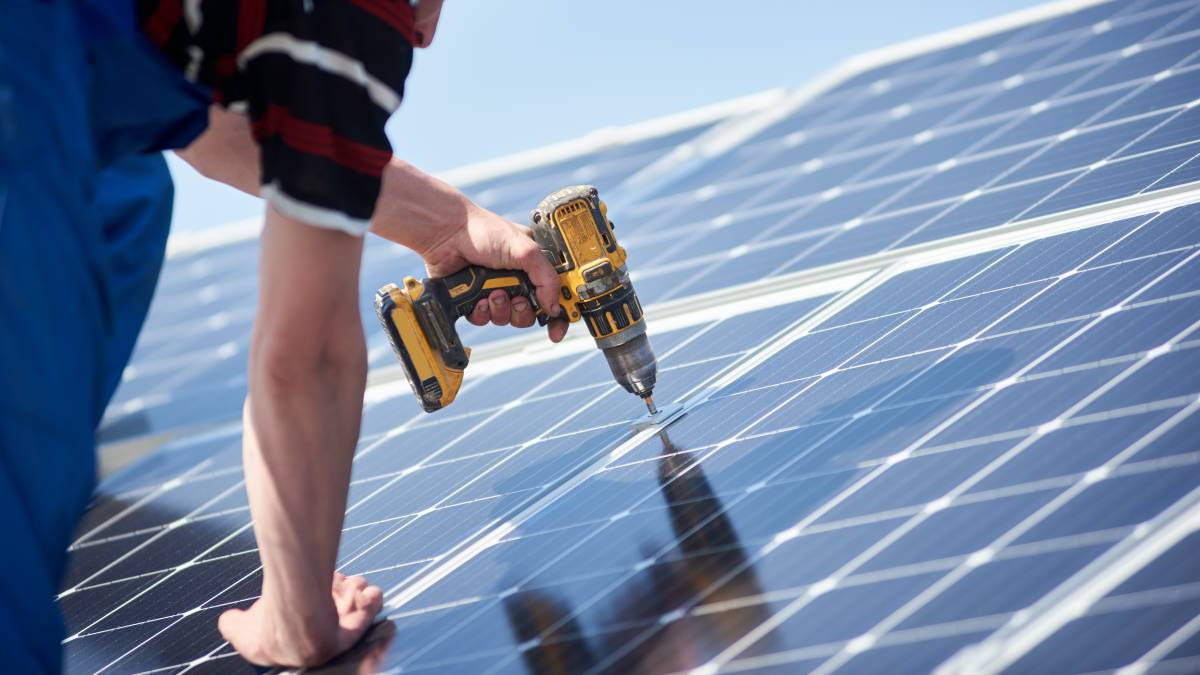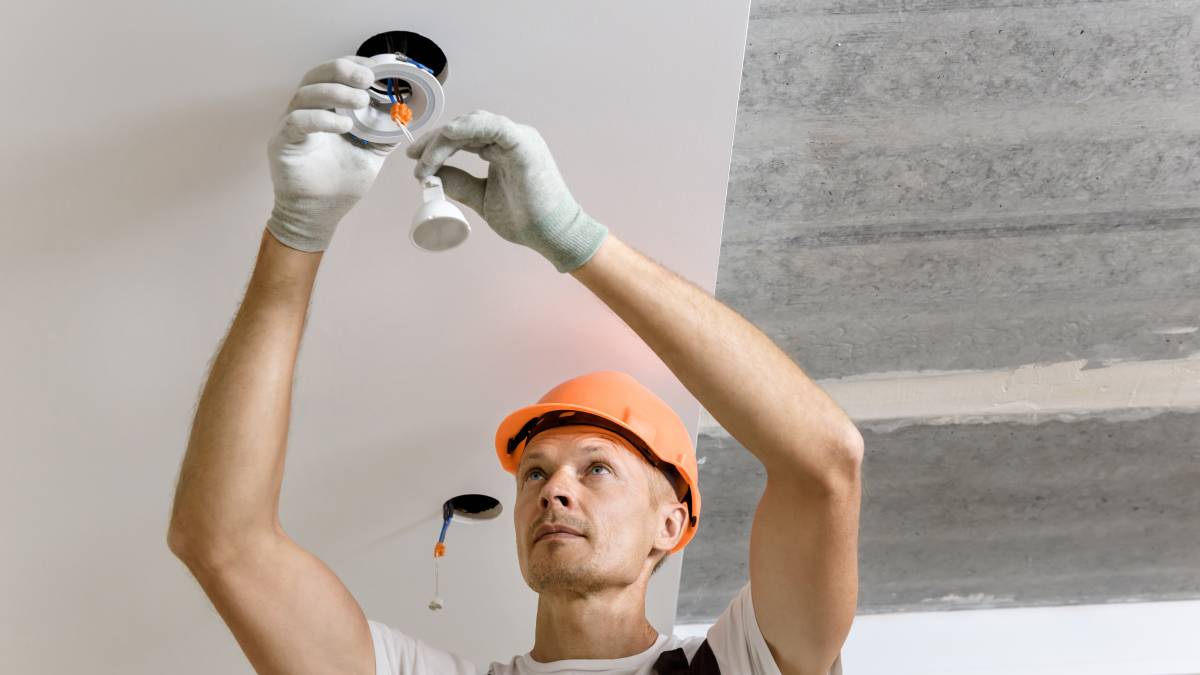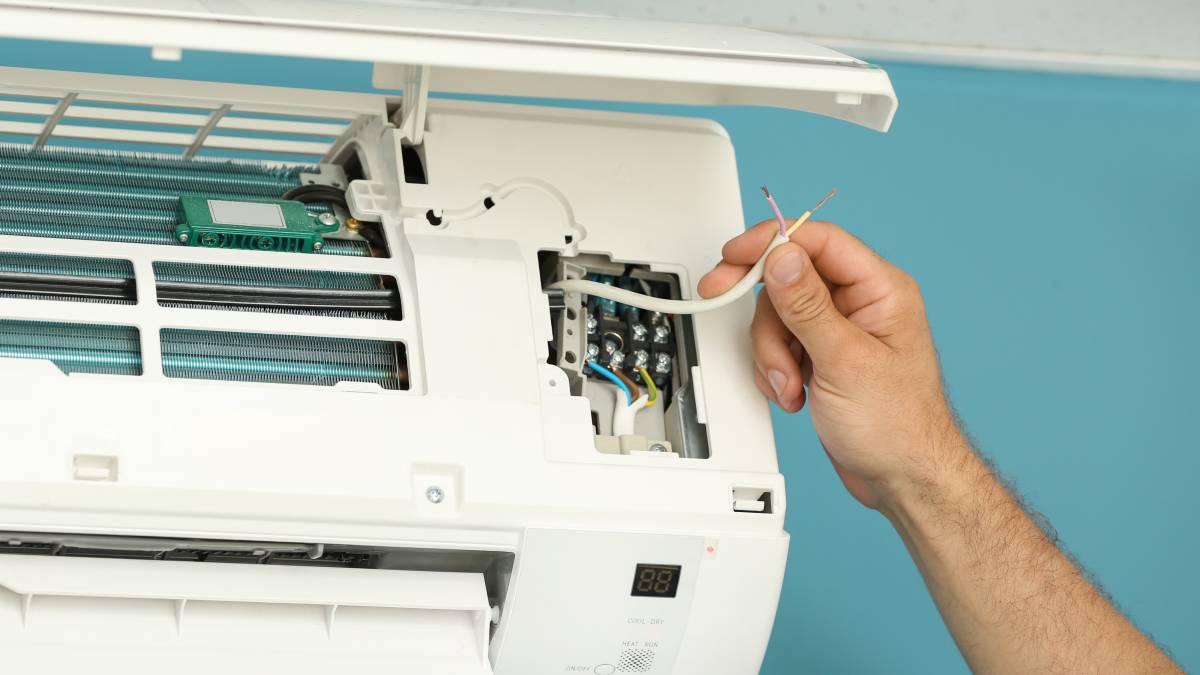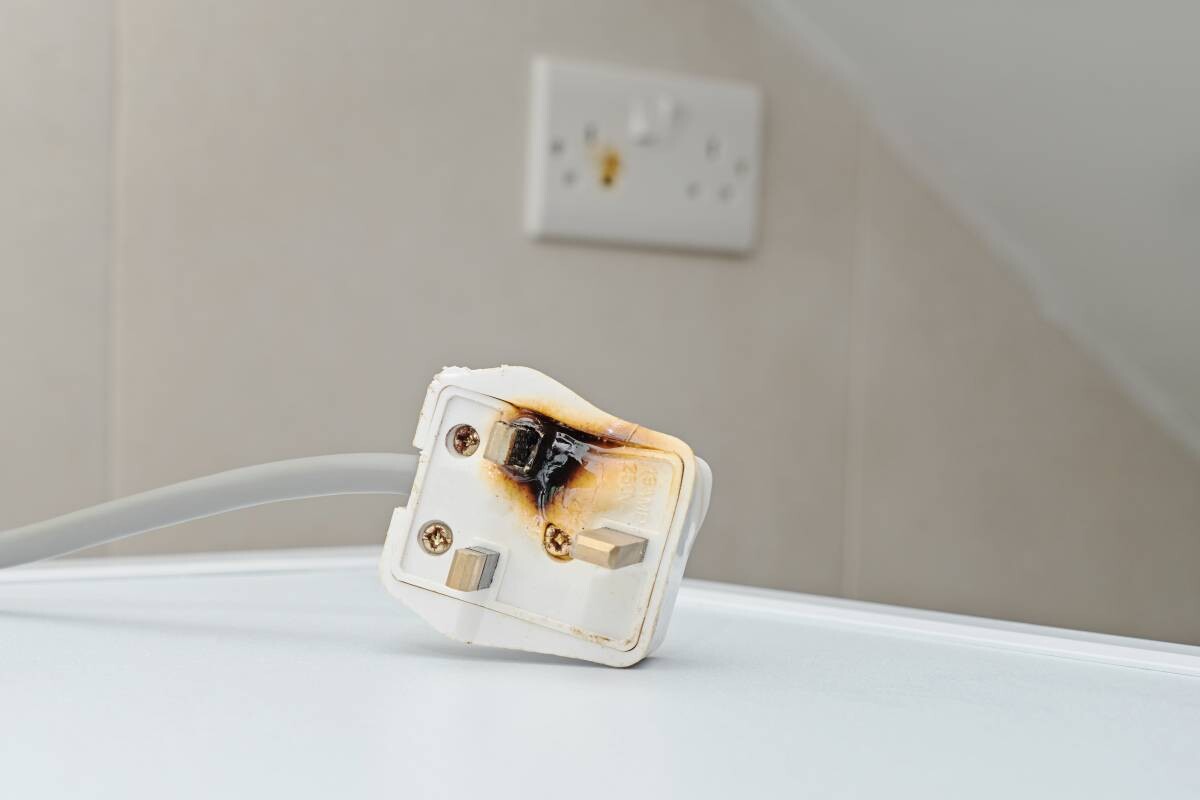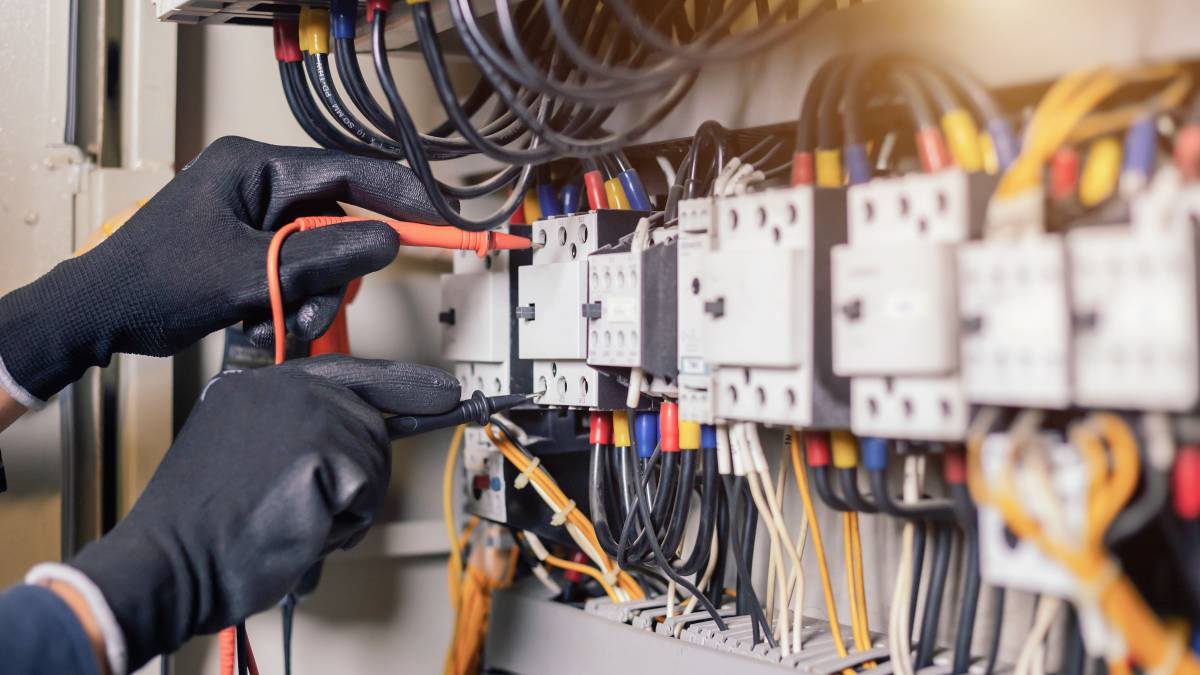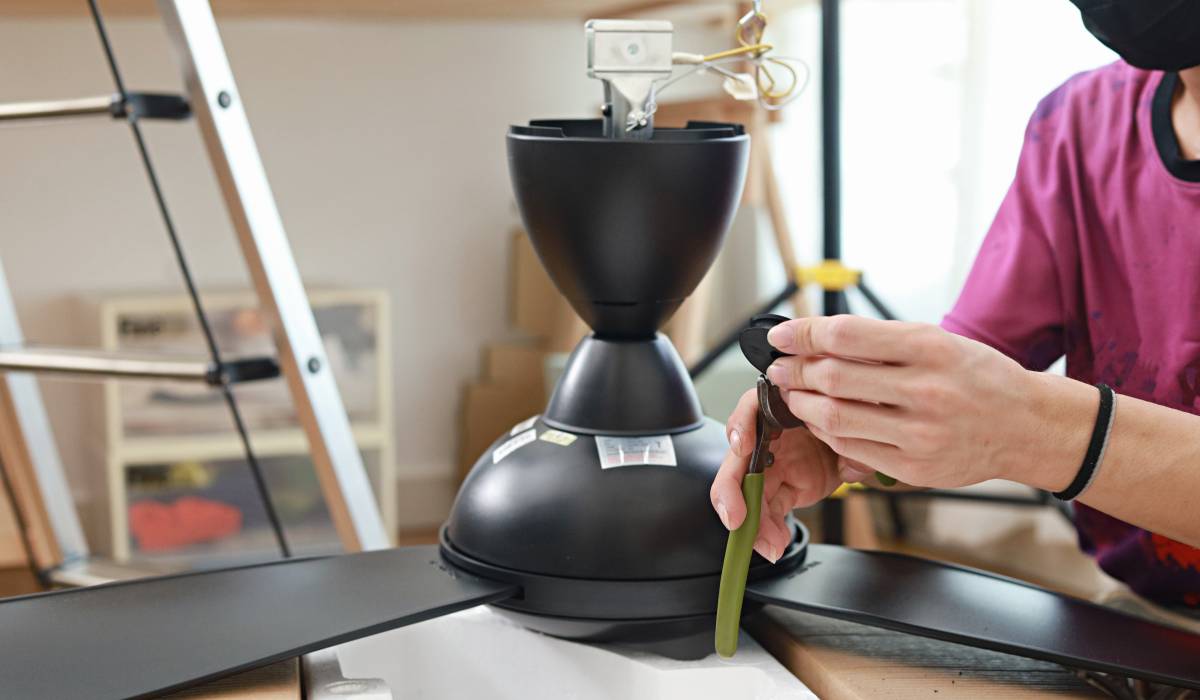- Home/
- Costs/
- Aircon Installation/
- Air Conditioning Installation Cost Guide
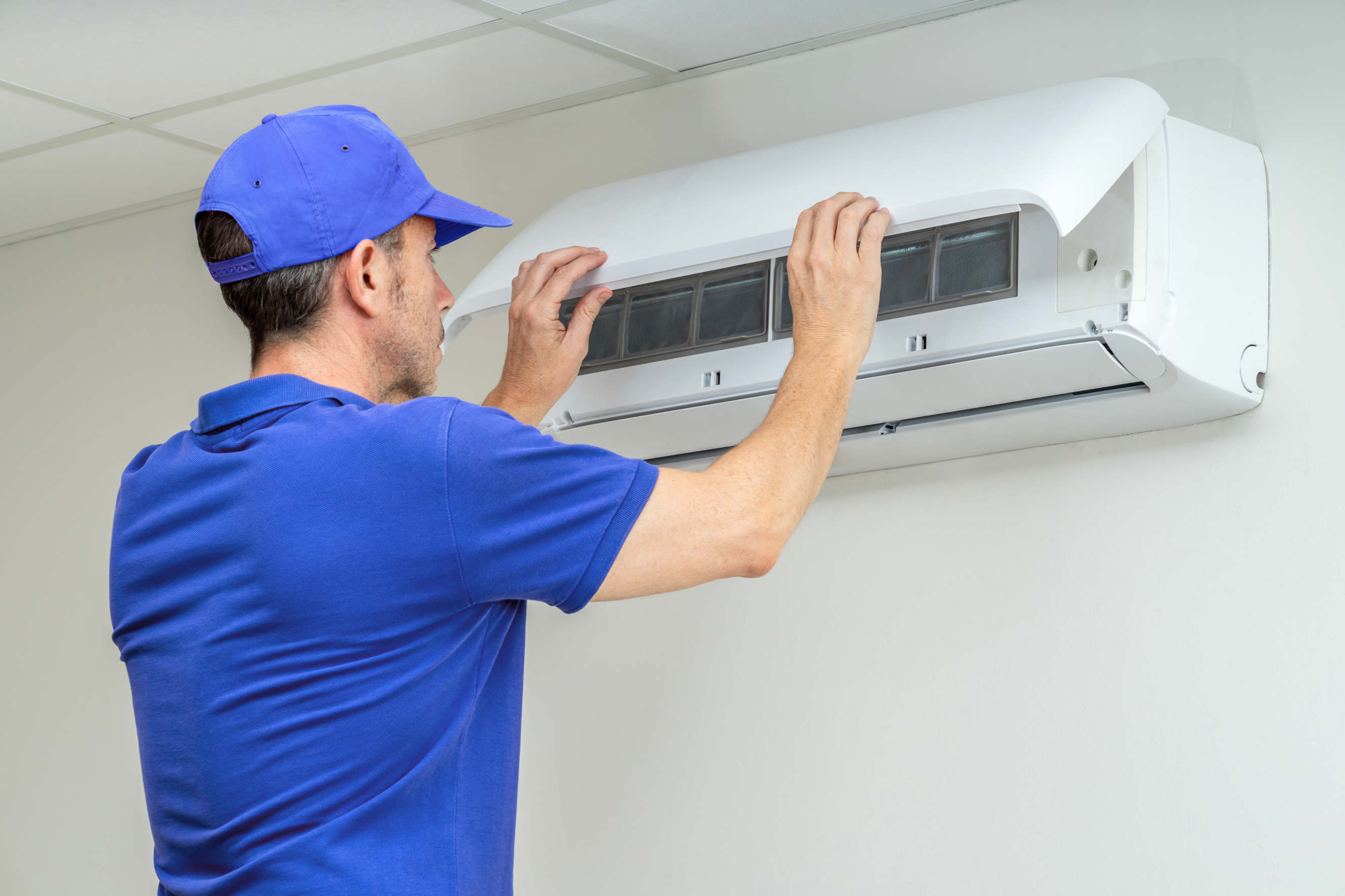
How much does air conditioner installation cost in Australia?
Get a free quote nowPost to find a price. It's free and only takes a minute.
Average price (labour + unit)
$1,380 - $7,144
low
$1,380
median
$4,262
high
$7,144
Last Updated on

Written by Cielo B.
Staff Writer
Read more about our contributor
Key Facts
- Air conditioner installation costs $1,380 to $7,144 in Australia.
- Some ways to reduce installation costs are to optimize home energy efficiency, leverage rebates, take advantage of off-season discounts, and opt for zoned cooling to reduce installation complexity and ductwork costs.
- Each state in Australia has specific licensing regulations for air conditioner installations, such as the ARC license for handling refrigerants and HVAC certification.
If you recently bought a new house or established a commercial space, air conditioner installations are necessary to keep indoor spaces cool and comfortable.
However, with the advanced technologies integrated into modern units, installations are now more complex, resulting in higher prices. The good news is that there are many ways to keep costs down, and that starts with understanding how much it costs to install an air conditioner.
This guide on air conditioner installation costs in Australia will help you prepare your budget and make informed decisions about which unit best suits your home.
What are the average costs of air conditioner installation in Australia?
On average, air conditioner (AC) installation costs $529 to $706. However, prices can vary widely by city because each area has different cost of living levels.
Sydney and Melbourne have the most expensive installation costs because these cities often experience a variable climate. Homes and commercial spaces in these cities need air conditioners with reverse cycle systems to adapt to different climate conditions, which usually costs more to install than a simple window air conditioning unit.
Here is a breakdown of the average costs of installing air conditioning by city:
| City | Average Cost of Air Conditioner Installation |
|---|---|
| Sydney | $617 — $822 |
|
Melbourne |
$580 — $773 |
|
Brisbane |
$555 — $740 |
| Perth | $524 — $699 |
|
Adelaide |
$494 — $658 |
| Canberra | $475 — $633 |
|
Hobart |
$463 — $616 |
*Includes average labour costs only.
What factors affect the costs of air conditioner installation?
Various factors can affect the total cost of installing an AC system, and we’ll break down each factor in this section. This will help you see how to stick to your budget while still meeting your cooling needs.
Air conditioner brand
Like other appliances, air conditioners come in brands with different features and designs. Premium brands such as Daikin, Mitsubishi, Fujitsu, and Panasonic have advanced features that require a specialised procedure, so installing them costs more.
Moreover, most premium brands come with extended warranties. For the warranties to be valid, you’ll have to ask the technician to use branded parts, driving up the cost.
For instance, Mitsubishi Electric and Daikin air conditioners are equipped with smart connectivity systems that require the installer to use additional wiring to integrate into a home’s automation system. They will have to work with precision and brand-specific parts to ensure proper installation, which can incur higher prices.
Meanwhile, budget brands such as Hitachi and Hisense require simple installations, as their air conditioning units often have limited advanced features. These brands can be a viable option for users looking to save on initial costs or those with simpler cooling needs.
Below are some of the popular air conditioner brands in Australia and their average cost per unit and installation:
|
Brand |
Average Cost of Air Conditioner + Installation |
|---|---|
| Daikin |
$1,525 — $9,339 |
| Mitsubishi Electric |
$1,603 — $8,718 |
| Mitsubishi Heavy Industries |
$1,450 — $13,332 |
| Fujitsu |
$1,555 — $8,512 |
| Panasonic |
$2,812 — $8,821 |
| Hitachi |
$853 — $6,058 |
| Hisense |
$1,376 — $3,620 |
| LG |
$2,018 — $6,821 |
Air conditioning type
Your choice of air conditioning type may also affect installation costs. Let’s start with the most common one—the split system air conditioner. Also known as the ductless mini-split, a split-type system comprises an indoor unit and an outdoor compressor that releases the heat absorbed from inside the building to the outside.
A ductless mini-split is more affordable than ducted air conditioning but more expensive than a regular wall or window unit. Prices for split system air conditioners range from $1,217 to $6,322.
Another variation of split system air conditioning is a multi-split. Installation costs are higher for a multi-split air conditioner because it consists of several indoor units connected to a single outdoor unit compressor. Installers need to use additional piping to connect the entire air conditioning system. The cost of fitting a multi-split air conditioning is typically around $2,617 to $7,822.
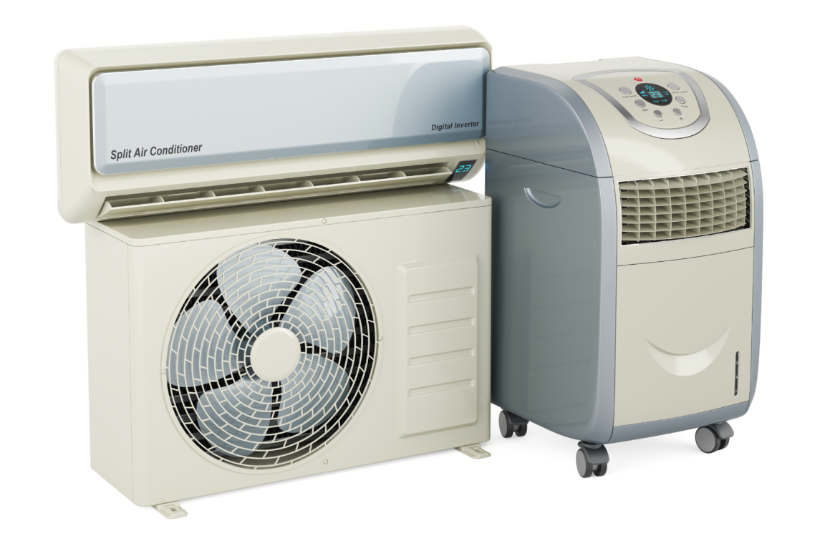 Choosing between a split air conditioner and a portable AC. (Source: iStock)
Choosing between a split air conditioner and a portable AC. (Source: iStock)
Next are the ducted air conditioners. These are the most expensive air conditioning types because they require additional ductwork before the actual installation. Even if you already have some ducts installed, the technician must upgrade the ductwork and wiring before installing the air conditioner. For reference, ducted systems can cost more than $15,000.
Fortunately, you can still find inexpensive ones like window and through-the-wall units. The former are simpler to install, as you only need to set up an air conditioner in an open window.
Through-the-wall units require more labour because you may need to ask a carpenter to cut a hole in the wall that would fit the air conditioner. Despite the added expense, wall air conditioners are relatively affordable to install, with prices ranging from $1,067 to $2,022.
Portable air conditioners are the next most affordable option, with prices starting at $300. However, they aren’t as efficient as the other types and are only suitable for small rooms.
Below is a breakdown of the air conditioning prices based on type:
|
Type of Air Conditioning |
Average Cost of Unit + Installation |
|---|---|
| Split-system |
$1,217 — $6,322 |
| Multi-split | $2,617 — $7,822 |
| Ducted |
$7,617 — $15,822+ |
| Wall/Window | $1,067 — $2,022 |
| Portable |
$917 — $2,022 |
Area size
Air conditioning installation costs can also depend on the size of the area that requires cooling. For example, large rooms with an area of more than 60 m² require air conditioning units with a large capacity, ideally around 6 to 10kW, to ensure optimal cooling. Installation costs are higher because air conditioners with large capacities often have more complex parts to run.
Here’s a rough guide on the ideal air conditioning system capacity based on the room size and estimated installation costs:
| Room Size |
Ideal AC kW |
Estimated Cost of AC Unit + Installation |
|---|---|---|
| Up to 20 m² |
2 — 2.5kW |
$1,317 — $3,722 |
| 20 to 40 m² |
2.5 — 5kW |
$1,317 — $4,502 |
| 40 to 60 m² |
5 – 9kW | $1,617 — $6,322 |
| 60 to 80 m² | 6 – 10kW | $1,817 — $6,300+ |
Installation complexity
Labour is often correlated to the time spent completing a job. So, the more advanced an air conditioner is, the higher the installation cost. Take multi-split air conditioners, for example. Even though they usually don’t need ductwork, some structural modifications and preparation are required before installation.
You’ll have to hire a carpenter or engineer to create wall openings for the refrigerant lines and drainage. AC installations also involve some electrical work, especially if your house is old and needs new electrical panels or circuits to handle the load of modern air conditioning units.
Moreover, the additional tools needed to finish the job can add to the cost of installing air conditioning. This often applies to a split system air conditioner, in which installers use vacuum pumps to remove excess moisture in the refrigerant lines, as moisture can damage the internal parts.
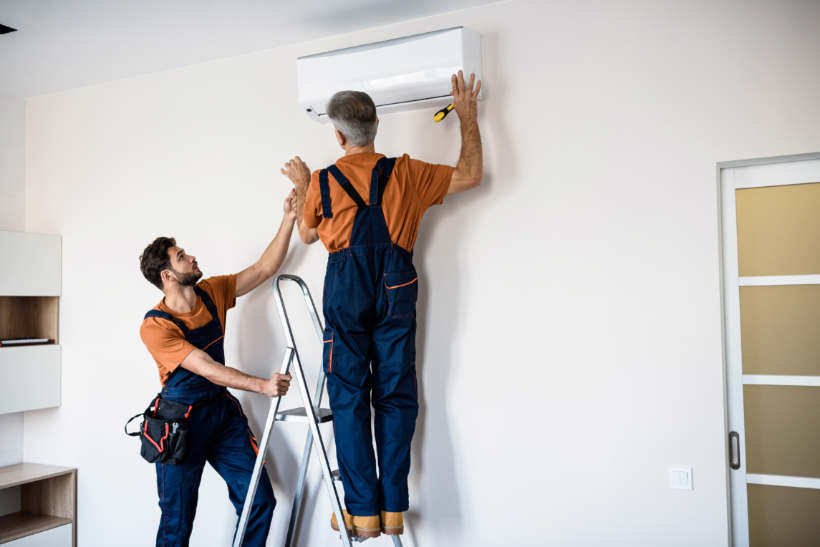 Installing a split air conditioner for efficient cooling. (Source: iStock)
Installing a split air conditioner for efficient cooling. (Source: iStock)
Location
Your location can also dictate AC installation costs. Prices are higher for hiring HVAC technicians in Sydney and Melbourne because these areas have a high cost of living compared to others. The average labour cost for air conditioner installations in these cities is around $100/hour, while those in rural areas charge $60/hour. However, specific hourly rates can still vary based on the technician’s experience and the job’s complexity.
Moreover, cities with urbanisation are packed with high-rise towers and apartment complexes. These high-density types of housing often need multi-split air conditioners, which are more expensive to install.
Climate and weather patterns in a specific region can also affect air conditioner installation costs. Sydney and Brisbane have hotter and more humid climates, so there’s a higher demand for air conditioning, translating to higher installation costs.
State and local regulations
Each state also has its own licensing requirements for air conditioning installations. Victoria, for instance, has specific plumbing regulations for refrigerated air conditioning. Arranging for permits can further increase installation costs.
Moreover, most states in Australia must adhere to minimum energy performance standards to minimise energy consumption. Because of this, consumers must invest in higher-rated and more expensive air conditioner units, which are more complex and expensive to install.
Special features or upgrades
Although special features and upgrades can add to the total cost of installing an air conditioner, they can help you save costs in the long term by improving energy efficiency. Here are some of the most popular features or upgrades for air conditioners:
Smart thermostat
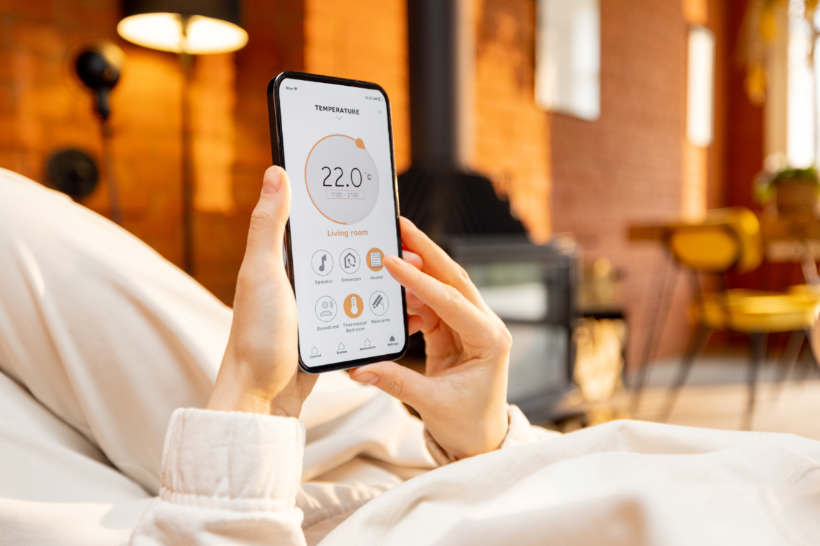 Enjoy effortless climate control with a smart thermostat. (Source: iStock)
Enjoy effortless climate control with a smart thermostat. (Source: iStock)
Adjusting air conditioner temperature settings is easier with smart thermostats. These devices allow you to control and program air conditioners using your smartphone or tablet with Wi-Fi connectivity. Some smart thermostats also have AI-integrated systems that can learn your habits and automatically adjust to your desired temperature settings.
In Australia, smart thermostats cost $48 to $1,137 for the unit alone. However, some extra installation costs are involved, which could be around $100 to $300.
Air purifier
Some air conditioners now have an air purification system with built-in HEPA filters that help remove allergens like dust, pollen, and dander. Since this is an added feature, it requires more labour and configuration on the installer’s part, so expect higher costs.
Additionally, you’ll have to factor in future maintenance costs. Once it’s time for your periodic air conditioning cleaning, you’ll need to have the filters and other essential purifying components replaced.
UV light
Adding UV light is a good idea if you want to level up your air purifying systems. It sterilises air and eliminates bacteria, mould, viruses, and other harmful microorganisms, preventing microbial growth. This makes it easier to maintain your air conditioner because it keeps the ducts and parts clean, improving efficiency and longevity.
UV lights designed to be integrated into air conditioning systems often cost around $60 to $291, with an additional installation cost of around $100 to $225.
Variable speed compressor
Energy efficiency is a vital feature in modern air conditioners, as this helps lower electricity consumption. Units with a variable-speed compressor are prime examples of such environmentally friendly appliances since they dynamically adjust their speed to maintain a consistent indoor temperature.
For instance, if it’s too hot, the compressor might run faster to cool the room faster. On the other hand, if the weather is mild, it runs at a lower speed, using less energy while keeping the temperature steady.
Since this is a unique and advanced feature, air conditioners with variable-speed compressors have higher upfront costs, ranging from $2,298 to $4,150. Despite the added expense, it’s a worthwhile investment for homeowners looking into long-term energy savings and improved systems.
Noise reduction tech
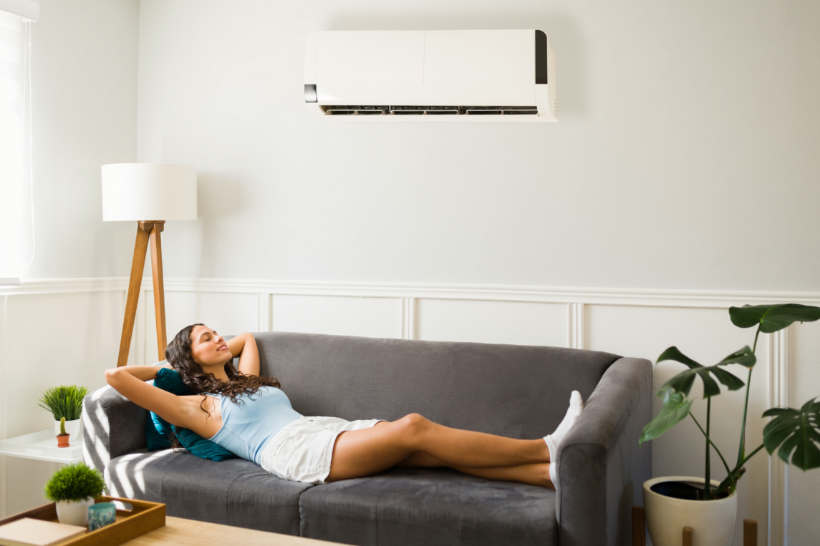 Relax undisturbed with a silent air conditioning system. (Source: iStock)
Relax undisturbed with a silent air conditioning system. (Source: iStock)
Most premium air conditioning units have noise reduction technology, such as quiet mode settings, integrated into their systems. This includes insulated compressors, vibration dampers, and specially designed fan blades that help minimise noise.
One of the benefits of upgrading to an air conditioner with noise reduction technology is that it enhances user comfort while sleeping or working in a home office.
Date and time
Your timing of availing of the service can also affect AC installation prices. Expect the costs to be higher during summer (which often starts around December) when the demand for such services surges. You’ll have to wait longer since installers are often busier during this peak season.
Overtime charges should also be considered when installing air conditioners. Installations usually last 4 to 8 hours, so there’ll be extra labour charges if they go beyond this timeframe.
While installing a new air conditioning system is a significant investment, sometimes a repair might be a more cost-effective solution. If your current system is underperforming, consider booking an aircon repair service before deciding on a full replacement. Airtasker offers access to experienced technicians in Sydney, Logan–Beaudesert, Gold Coast, Ipswich, and West Melbourne who can assess your system and provide expert advice.
What are some ways to save on air conditioner installation?
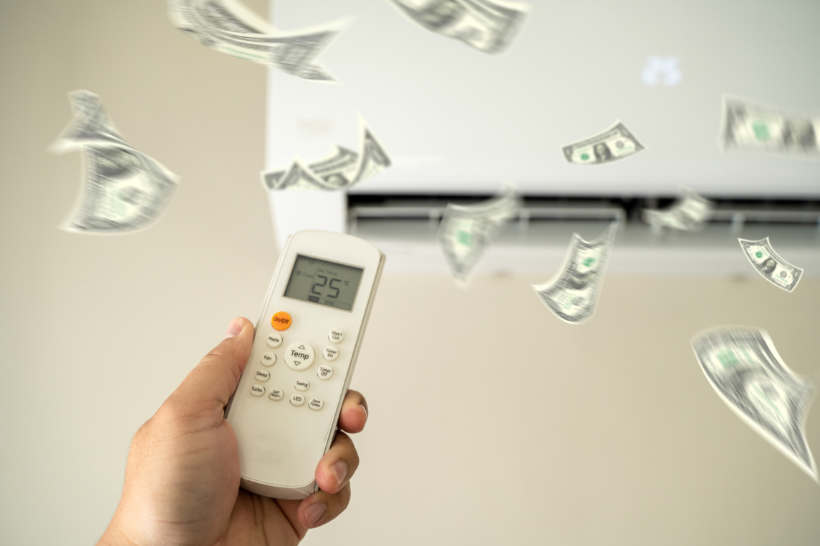 Cut costs with smart air conditioner installation choices. (Source: iStock)
Cut costs with smart air conditioner installation choices. (Source: iStock)
Optimise home energy efficiency
Before the scheduled installation, you may have to improve energy efficiency at home. Hire someone to seal gaps around doors, windows, and openings. This helps prevent the air conditioner from working too hard, helping lower your energy bills. Also, consult an electrician to check if the existing wiring and circuits are compatible with the new air conditioner. Doing all these extra steps helps prevent incurring additional charges during installation.
Leverage rebates and incentives
In Australia, several rebates and incentives are offered to customers who invest in appliances that boost energy efficiency.
The Victorian Energy Upgrades (VEU) is one of the programs you may take advantage of to get rebates and discounts for buying energy-efficient air conditioners. As long as the unit is listed with the Essential Services Commission and the installer is a VEU-accredited provider, you are already eligible for the rebate.
The New South Wales (NSW) government also offers an upfront incentive for users to upgrade their air conditioning systems to a more energy-efficient model. The program provides an upfront installation discount if an accredited supplier does the work.
Take advantage of off-season discounts
Earlier, we mentioned how demand spikes during summer, so plan AC installation as much as possible during the cooler months, around June to August. HVAC contractors often experience lower demand, so discounts and promotions are highly likely during these times. Also, since installers aren’t too busy, you can hire a preferred installer right on the schedule.
Upgrade to zoned cooling
Zoned cooling means dividing the indoor spaces into sections or zones, each with its own thermostat and control. This helps you identify which specific areas require cooling the most. You’ll be able to save on installation costs because this eliminates the need to build and install more complicated ductwork.
What should you look for in a professional aircon installer?
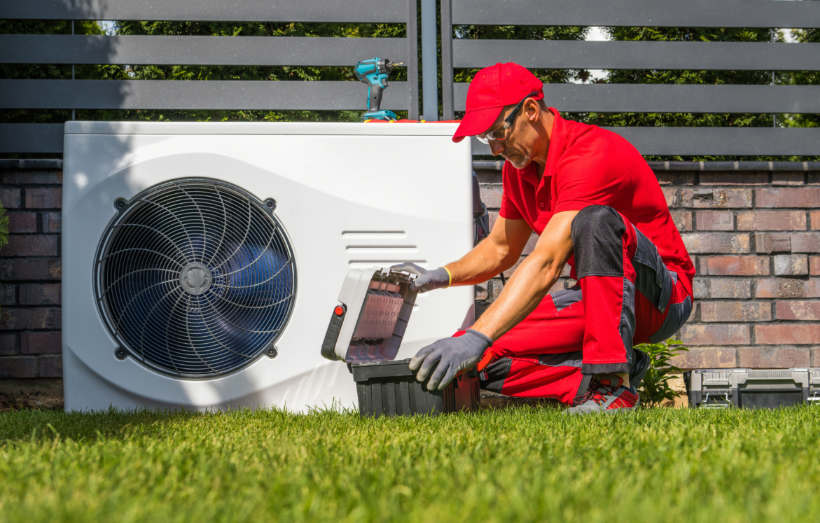 Ensuring peak performance with professional AC maintenance. (Source: iStock)
Ensuring peak performance with professional AC maintenance. (Source: iStock)
Licenses and certifications
Heating and cooling technicians should hold an ARC (Australian Refrigeration Council) licence, as this indicates that they are already authorised to handle refrigerants, which can have environmental and health impacts. A Heating, Ventilation, and Air Conditioning (HVAC) certificate is also important, as this document shows that the technician has undergone formal training in handling various air conditioners.
Knowledge of energy efficiency and compliance
Skilled installers should be knowledgeable about energy rating labels to help you quickly decide which models can reduce your daily energy consumption. Most importantly, they should provide guidance about environmentally friendly refrigerants like the R-32 or R-410A in air conditioners. These substances can significantly harm the environment when used too much.
Australia also has some energy-efficiency laws regarding residential heating and cooling, so the installer must be aware of them to avoid legal violations. Following the guidelines ensures that the air conditioner will operate safely and efficiently after installation.
Ability to conduct thorough assessments
It is crucial to find a hands-on installer who performs a thorough assessment, checking everything from room size and ceiling height to insulation. This will help you choose an air conditioner that has the right size and capacity to cool your home effectively. Additionally, they should consider zoning needs, especially if you have a large home.
Aside from the initial assessment, the installer should consider future expansions or upgrades. For instance, if you eventually plan to build a smart home once your budget is sorted, they should be able to recommend compatible units.
Partnerships with reputable brands
Quickly research online to check whether the installer has partnerships with reputable brands. These brands uphold high standards regarding products and services, so you can rest assured that the air conditioner installer affiliated with them will deliver quality work.
Affiliated installers also provide warranty-backed labour and parts, so choosing them can ensure that your warranty will remain valid after installation.
Beat the heat at home with Airtasker
Now that you know how much it costs to install an air conditioner, finding a reliable installer is the next step. Posting a task at Airtasker can help you easily connect with the experts around you. Simply describe your specific needs and budgets, and you’ll receive offers from various air conditioning installers, allowing you to compare and choose which services best fit your needs.
Having a reliable Tasker do the tedious work can help you avoid the stress of air conditioner installation. So, post a task today and enjoy lounging around your cool and comfortable home.
Learn more about our contributors

Written by Cielo B.
Staff Writer
Cielo is an experienced content writer who has explored various industries throughout her career. Her expertise, founded on a degree in journalism, includes writing about automotive and vehicle maintenance. She’s an avid car enthusiast who loves driving through lush rural areas with her old (but reliable) manual car. Cielo also covers topics like dressmaking, tailoring, and photography since she is a passionate cosplayer who enjoys dressing up as her beloved anime characters.
FAQs on air conditioner installation
Not necessarily, but professional installers are trained to ensure that your air conditioning systems are correctly and safely installed, keeping the warranty valid. This is why it is highly recommended for a professional to do the installation.
First, you’ll need a professional to thoroughly assess your old AC system to see whether it’s more expensive to upgrade or buy a new one. If the system is nearing its end, buying and installing a new one is more cost-effective. However, upgrading is better if it’s still relatively efficient and requires minor aircon repairs.
Yes, the initial installation costs are higher for energy-efficient air conditioners because they are often equipped with complex systems requiring more time and money. While this might be true, you’ll still garner significant long-term savings, as these AC systems conserve energy.
Yes, older homes typically have higher air conditioner installation costs because they often have outdated electrical systems that need a significant upgrade. Not to mention, many older homes lack ductwork, so if you decide to invest in a central air conditioning system, you’ll still have to pay extra for installing new ducts.
Find aircon installers, fast
Post a task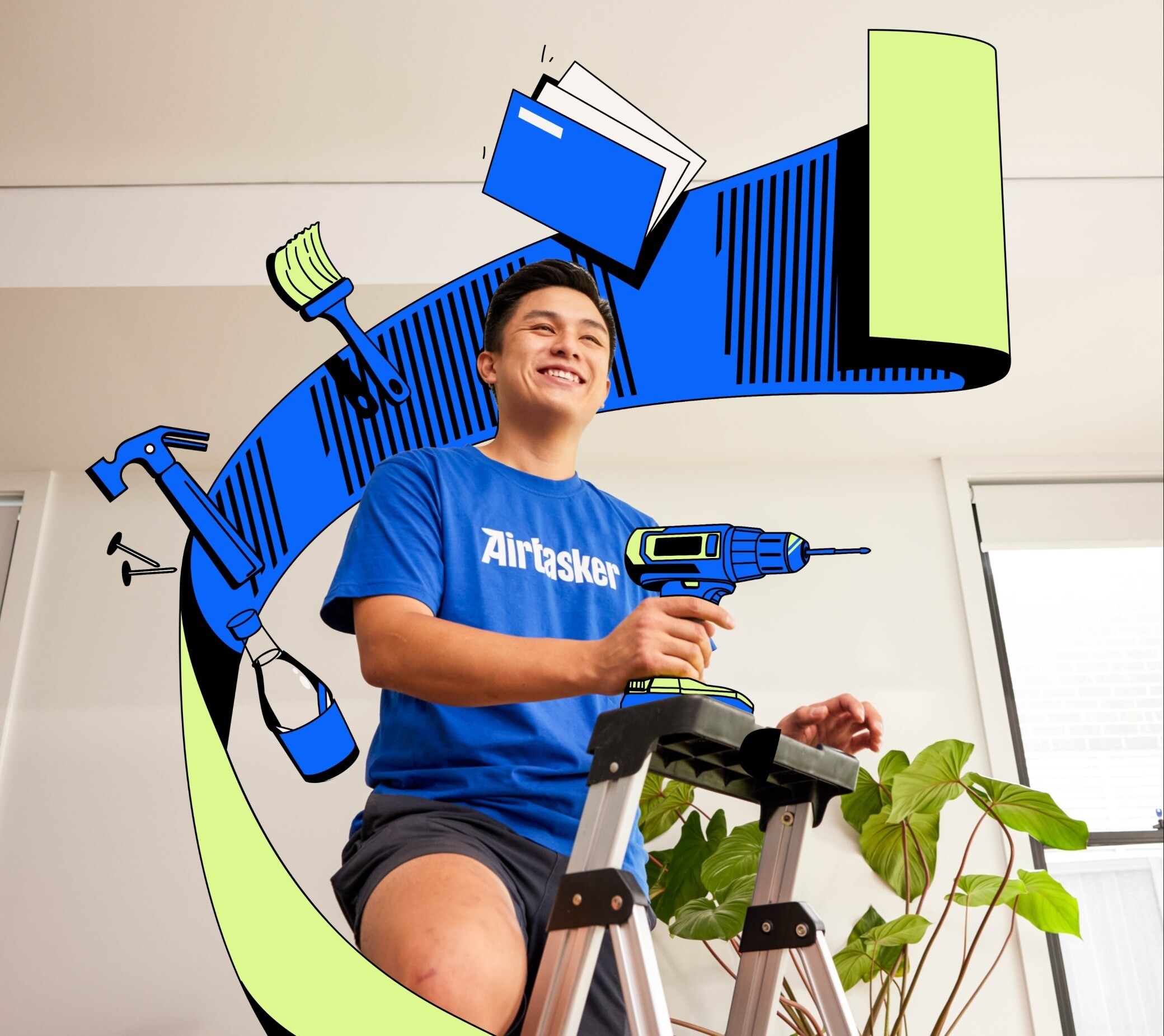
Related price guides
Related articles
